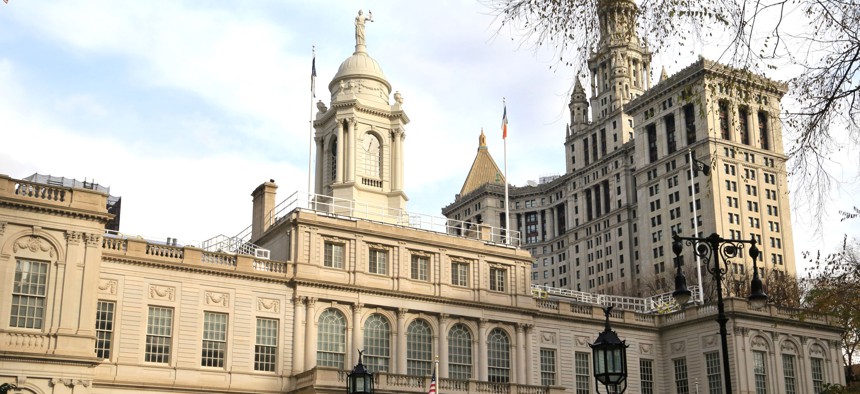Editor’s note: We originally wrote this story on Nov. 22, 2023. In light of the federal indictment of New York City Mayor Eric Adams, we thoroughly updated it on Sept. 26. 2024.
From Koch to Dinkins to Bloomberg to de Blasio, every mayoral administration over the past 45 years has endured a corruption investigation. Over the years, few mayors under investigation have resigned: Jimmy Walker, Tammany Hall mayor from 1926 to 1932 resigned, and he wasn’t even indicted. In 1950, William O’Dwyer resigned amid a police corruption scandal.
With the U.S. Attorney for the Southern District of New York’s indictment against New York City Mayor Eric Adams unsealed and calls for his resignation piling up – to which he seems unwilling to yield – New Yorkers are left to wonder: What would it take for the mayor to be removed from office?
According to the New York City Charter, Gov. Kathy Hochul has the power to remove the mayor from office “upon charges,” as long as the mayor gets “an opportunity to be heard in his defense.”
Should there be a vacancy, Public Advocate Jumaane Williams would have three days to call for a nonpartisan special election to fill the vacancy. The special election would need to be held within about 80 days. Candidates would have two weeks to petition onto the ballot, according to election lawyer Aaron Foldenauer. If a vacancy were to occur after March 26, 2025, Williams would serve out the remainder of the term as acting mayor, said election lawyer Sarah Steiner. But were Gracie Mansion to become vacant on or before March 26, 2025, a nonpartisan special election would be held. That means that – theoretically – a special election to finish out Adams’ term could be held within about a week of the June 24, 2025 primary.
A move by Hochul would not be the only option to remove the mayor, however: The charter also allows for an “inability committee” to step in. That would consist of the corporation counsel (a currently vacant role), City Council Speaker Adrienne Adams, a deputy mayor of the mayor’s choice, City Comptroller Brad Lander (who is running for mayor) and Queens Borough President Donovan Richards Jr., who is the longest-serving borough president. At least four members of the committee would need to vote to launch a panel of inability, which would consist of the entire City Council.
The inability committee could decide that Adams needs to be removed permanently, at which point, the City Council could vote to oust him, requiring a two-thirds majority. (The committee could also choose to remove him temporarily.) The matter would proceed like any other mayoral vacancy from there.
Foldenauer emphasized that as far as the City Charter goes, these are uncharted waters. “It doesn’t seem like this is the scenario (the charter) is designed for,” he said.
Corrections:
This article previously misstated when a special election could occur. If a vacancy occurs more than 90 days ahead of the primary election, a special election would be held.
This story has been corrected to reflect that more than one mayor has resigned in the past century, including William O’Dwyer.
NEXT STORY: Eric Adams charged with bribery, fraud, soliciting foreign campaign donations


